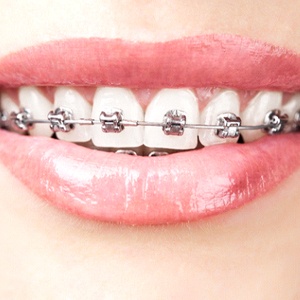Comprehensive Overview to Orthodontics Treatments for Correcting Dental Misalignments
In the realm of orthodontics, the trip to accomplishing a perfectly lined up smile entails a myriad of procedures tailored to deal with dental misalignments. From standard dental braces to invisible aligners and even medical options, the field of orthodontics uses an array of solutions to address varying degrees of dental irregularities. Comprehending the details of each treatment, including their mechanisms, advantages, and potential drawbacks, is vital in making educated choices concerning one's orthodontic therapy. As we browse through the extensive guide to orthodontic procedures for fixing dental misalignments, the complex information of each technique will certainly unravel, clarifying the path toward a harmonious and practical dental alignment.
Orthodontic Procedures Introduction

Regular adjustments and tracking are vital parts of orthodontic therapy to guarantee development is on track and to make any type of essential modifications along the method. By undertaking orthodontic procedures, people can not only accomplish a straighter grin however likewise improve their general dental wellness and feature.
Typical Dental Braces: How They Work
When taking into consideration orthodontic therapies for oral misalignments, conventional dental braces stand out as a tried and true approach for correcting teeth positioning. Traditional braces are composed of brackets, cables, and bands that function with each other to use continuous stress on the teeth, progressively moving them into the wanted alignment.
As stress is used to the teeth via the dental braces, the bone bordering the teeth is improved to sustain the new tooth positions. Patients will certainly need routine modifications at the orthodontist's workplace to guarantee the braces continue to apply the correct pressure for effective teeth movement.
Invisible Aligners: Cons and pros
Unnoticeable aligners provide a discreet and convenient choice to traditional dental braces for dealing with oral misalignments. These clear, tailor-made trays are essentially undetectable when put on, making them an enticing choice for individuals looking for an extra visually pleasing orthodontic treatment. Among the key benefits of unnoticeable aligners is their removability, permitting for less complicated upkeep of oral health contrasted to standard braces. Patients can get rid of the aligners prior to eating or brushing their teeth, reducing the threat of food getting stuck in the device and simplifying the cleansing procedure.

Surgical Orthodontic Options
Surgical interventions in orthodontics present viable options for attending to complicated oral imbalances that might not be successfully resolved with traditional orthodontic treatments. While unseen aligners and traditional dental braces can correct many orthodontic issues, certain instances call for surgical intervention to achieve optimum outcomes. Surgical orthodontic choices are normally advised for serious malocclusions, significant jaw discrepancies, and instances where the underlying bone framework needs modification to attain correct positioning.
One typical surgical orthodontic treatment is orthognathic surgical treatment, which involves rearranging the jaws to remedy functional issues such as trouble talking or chewing. This surgical procedure is commonly carried out in collaboration with an orthodontist that assists align the teeth prior to and after the procedure. Surgical orthodontics might likewise entail procedures to expose influenced teeth, eliminate excess periodontal cells, or improve the jawbone to produce a more unified facial account.
Before taking into consideration surgical orthodontic alternatives, individuals go through a comprehensive examination to identify the need and prospective advantages of such interventions. cumming braces. While surgical treatment may appear difficult, it can considerably boost both the function and aesthetics of the smile in situations where standard orthodontic treatments fail
Retainers and Post-Treatment Treatment

Failure to conform with post-treatment care instructions can result in relapse, where the teeth progressively relocate back in the direction of their original positions. Regular retainer wear, excellent dental health, and regular dental check-ups are important for maintaining the outcomes achieved with orthodontic surgery and ensuring the long-term security of the remedied dental alignment.
Conclusion
Finally, orthodontic treatments provide various alternatives for dealing with oral misalignments. Traditional dental braces make use of steel brackets and cords to move teeth into correct positioning. Unnoticeable aligners provide an even more discreet alternative yet may not be suitable for all instances. Surgical orthodontic options are readily available for a lot ppo dentist near me more severe imbalances. Retainers are generally used post-treatment to maintain the brand-new placement. In general, orthodontic treatments can successfully improve oral wellness and aesthetic look.
As we navigate with the thorough guide to orthodontic treatments for correcting dental imbalances, the detailed details of each approach will certainly unfold, dropping light on the course toward a go to my site harmonious and practical dental placement. - cumming orthodontics
One of the most common orthodontic treatments is the use of braces, which are composed of steel braces and wires that apply mild stress to progressively shift teeth into the preferred setting.When taking into consideration orthodontic treatments for dental misalignments, standard dental braces stand out as a reliable method for fixing teeth placing. In addition, unseen aligners might not be suitable for complex orthodontic problems that need even more considerable teeth activity, as they are typically recommended for mild to moderate cases. Retainers are personalized orthodontic devices designed to hold teeth in their fixed positions after the completion of orthodontic treatment.